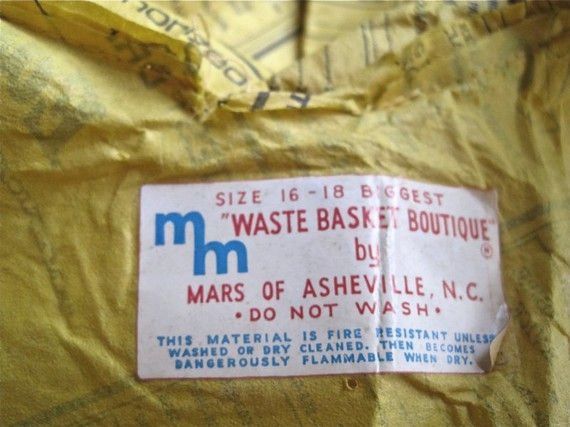
The disposable paper dress was an explosive, but fleeting fashion trend in the 1960s at a time when themes of advertising, mass-production, consumerism, and attitude shifts that favored ephemerality over durability were defining an ever-changing era. American pop art, embodied by the works of contemporaries such as Andy Warhol and other artists, made a splash on the ready-made canvas of the paper dress. The MFA’s paper “Souper Dress,” distributed by Campbell Soup Company, is a well-known example of fashion appropriating pop art—in this case, inspired by Warhol’s iconic “Campbell’s Soup Cans” paintings.
The“Yellow Pages” paper dress shown above, decorated with an all-over printed pastiche of Yellow Pages advertisements and sporting a tie collar—together with the MFA’s “Souper Dress“—was part of a dual fashion acquisition in 2003, among the earliest of the MFA’s purchases by way of internet auction.

What’s black and yellow and read all over? The Yellow Pages dress! It’s wild, wacky and wonderful. A flashy paper put-on that’s just plain fun to wear. We’ll send your Yellow Pages Dress to you just about long enough to cover your knees—then with a pair of scissors you can cut it to any length you like.”
~ Teaser for the “Yellow Pages” paper dress advertisement
The first “throwaway” paper dresses originated with Scott Paper Company in 1966 as a promotional gimmick to advance its line of paper products (napkins, paper towels, paper plates, and more) and its development of new, improved paper-based technology. For the cost of $1.00 + 25 cents for shipping and handling, along with a coupon clipping, thousands of customers sent in their orders. Despite the phenomenal sales metrics (500,000 dresses sold within eight months) Scott Paper had no intentions to diversify along the lines of fashion. This provided an opportune moment for other companies and designers to join the frenzy and capitalize on the high demand for this popular novelty item.

One such company was Mars of Asheville, NC, a hosiery manufacturer that went on to produce paper for fashion, becoming a giant in the disposable fashion industry. Mars produced the “Yellow Pages” dress in the MFA’s collection. The company’s tagline, “The Pioneer in Disposable Fashion,” along with its “Waste Basket Boutique” line, was a tangible expression of the pervasive throwaway culture of the 1960s—a way of engaging with the new “modern age” that valued unencumbered convenience and visions of the future.
Click for description and collection data on mfa.org
Objects in Brief is a randomized showcase of the MFA, Boston’s encyclopedic Textile and Fashion Arts collections. A featured object is indicative of the author’s curiosity and chosen so she may learn about its material and structural properties, function, history, and greater story. These “quick studies” have led to more in-depth explorations posted in A Closer Look.
